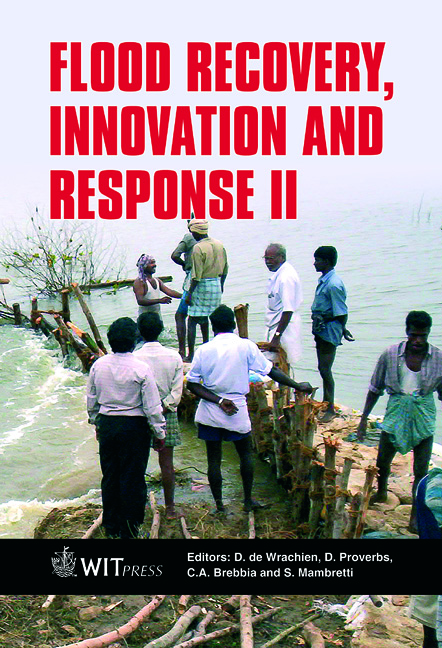Inundation Risk Assessment Of Underground Spaces In The Downtown Of Fukuoka City, Japan
Price
Free (open access)
Transaction
Volume
133
Pages
11
Page Range
143 - 153
Published
2010
Size
2,252 kb
Paper DOI
10.2495/FRIAR100131
Copyright
WIT Press
Author(s)
H. Hashimoto & K. Park
Abstract
Two flood events, which were due to short-time heavy rainstorms, hit the downtown of Fukuoka City in Japan in 1999 and 2003. The Mikasa River in this city overflowed its banks, and then the overflowing water moved down the roads to the railroad station, called ‘Hakata-eki’. This area is a dense downtown with many office buildings and underground spaces utilized for restaurants, parking garages, shopping malls and a subway station. The flooding water inundated the basements of many buildings and the other underground spaces. The purpose of the present study is to develop an inundation risk assessment method for underground spaces. Firstly, two types of underground spaces near the ‘Hakataeki’ railroad station can be distinguished; one is a small-scale underground space utilized for restaurants and parking garages, and the other is a large-scale underground space for a subway station and shopping malls. Secondly, the floodwater behaviour within the two types of underground spaces is simulated. Finally, on the basis of the simulation, a method for risk assessment of inundation of underground spaces due to a flood event is proposed. Keywords: urban flood, underground space, flood risk management. 1 Introduction A heavy rainstorm hit Fukuoka City in Japan on June 29, 1999. Rainfall began at 4:00 p.m. on June 28 and ended at 11:00 a.m. on June 29. The main rainfall lasted from 6 to 10 a.m. on June 29. The accumulated rainfall was 159.5 mm from 4:00 p.m. on June 28 to 11:00 a.m. on June 29. The largest hourly rainfall
Keywords
urban flood, underground space, flood risk management





